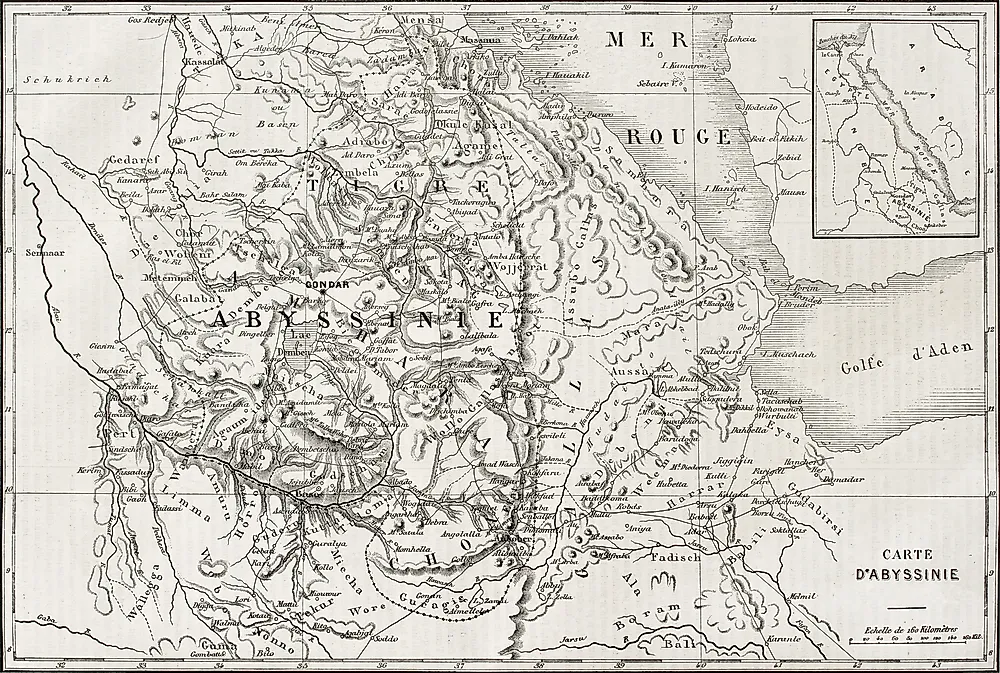What Happened During The Migration to Abyssinia Or The First Hegira?

The First Hegira was an event in the early history of the Islam religion which facilitated the development of Islam in Africa. In the early days of Islam, Prophet Muhammad gained a sizable number of followers who were persecuted by the ruling Quraysh tribe. The members of this ruling tribe observed Polytheism and were opposed to Islam which insisted on the existence of one God. Prophet Muhammad was forced to persuade his followers to flee to exile in Abyssinia.
Historical Background
The early adherents of Islam were not treated kindly by the neighboring polytheists. The polytheists were opposed to the revolutionary teachings propagated by Islam. Prophet Muhammad insisted that all people were equal regardless of class, race, or privilege, and that it was the responsibility of every human to share their wealth with the less fortunate. Such teachings angered the rulers of the Quraysh because the adoption of Islam would result in the abolishing of the political system which empowered them and gave them enormous privileges. The polytheists began insulting and jeering the Muslims, and they soon adopted physical violence. The early Muslims were further left thirsty and hungry until they orally recognized the divinity of the two primary idols, Lat and 'Uzza. Each leader harassed the Muslims in his tribe by imprisoning them in their houses and preventing them from seeing the Prophet. Some Muslims who were steadfast in their faith faced torture and even martyrdom. These events saddened Prophet Muhammad, and he decided to send them to Abyssinia to save both their lives and faith. Abyssinia was then governed by the Christian ruler the Negus Ashama ibn Abjar who was said to be kind-hearted and just. Abyssinia was the present day Ethiopia and Eritrea.
The Migration
The Muslims relocated to Abyssinia in two waves. The first group featured eleven men and four women, and Uthman bin Maz'oon was appointed as the leader by the Prophet. The group also included Uthman ibn Affan who would subsequently become the 3rd caliph. One year after settling in Abyssinia, the Muslims heard rumors that the ruling Quraysh had embraced Islam and therefore they headed back to Mecca. However, on reaching Mecca they realized that the rumors were false as the Quraysh had even intensified the harassment of Muslims. The Muslims returned to Abyssinia in a larger group of 83 men and 18 women. Ja'far ibn Abi Talib, who was a cousin to Prophet Muhammad, was the leader this second group.
Events In Abyssinia
Word reached the Quraysh that the exiles were free to observe Islam in Abyssinia. The tribe sent emissaries to the Negus with presents for him as well as his generals. The eissaries pleaded to the Negus to let the exiles return to Mecca and branded them as "foolish youth" who had created a religion that neither the Abyssinians or the Meccans had witnessed before. The Negus summoned the exiles, and Ja'far ibn Abi Talib informed the Negus of the persecutions they had suffered under the Quraysh, and he also quoted a paragraph from Quran. The Negus wept on hearing the passage and refused to give up the exiles. Among the emissaries was 'Amr Ibn al-'As who went before the Negus the following day and said that the fugutives had proclaimed a dreadful thing concerning Jesus. To this accusation, Ja'far replied that Jesus was "God's prophet, His servant, His word, and His spirit, who was cast on virgin Mary." This answer satisfied the Negus, and the sent away the envoy.
End of Exile
Most of the Abyssinian exiles made the journey back to Mecca in 622 and participated in the hijra to Medina together with Muhammad. The second group of the exiles arrived in Medina in 628.











